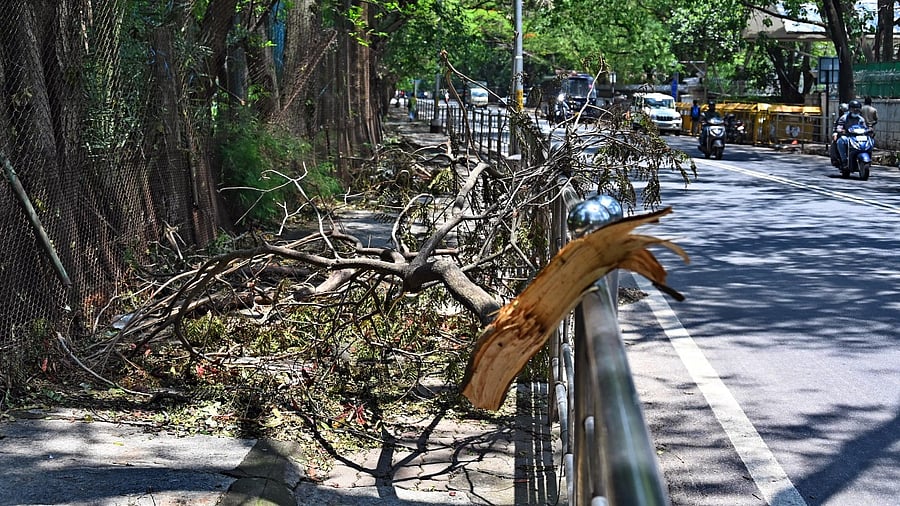
Pre-monsoon showers have highlighted the dangers of trees uprooting and disrupting life in the city. Although the BBMP’s Forest Department has been pruning trees and clearing debris after each rainstorm, experts believe that it is too little too late.
The forest department takes up pruning and maintenance of the green cover in the city throughout the year and not just before the monsoon season, noted Sarina Sikkaligar, DCF, BBMP. “We are following scientific procedures to prune trees in the city and have started extra trimming in some areas too,” she asserted.
However, T V Ramachandra, senior scientist with the Centre for Ecological Sciences (CES), Indian Institute of Science (IISc), slammed the BBMP's mismanagement as the reason for such extensive treefall.
"The BBMP has covered the areas around trees with concrete and have not created any provision to allow water to percolate into the roots, causing trees to become weak and prone to falling when gusty winds hit them," he said.
With the situation worsening due to climate change, he suggested that the BBMP should plant native species of trees that are stronger and more resilient to climate change instead of focusing on bringing in exotic tree species from elsewhere.
He warned that the issue of trees falling will worsen as we move into the monsoon season and pushed for immediate measures. "It is virtually impossible to identify what trees are becoming weak and are more likely to fall because even supposedly healthy trees have uprooted in these pre-monsoon showers. This is a very worrying scenario and the BBMP needs to take mitigating measures immediately," he said.
Noted environmentalist Suresh Heblikar noted that the rampant nature of development in the city is the root cause for the weakening of trees.
"The city's topography must be studied to understand what species of trees must be planted in certain locations to act as rain catchment areas so that we can prevent waterlogging and flooding issues," he said.
